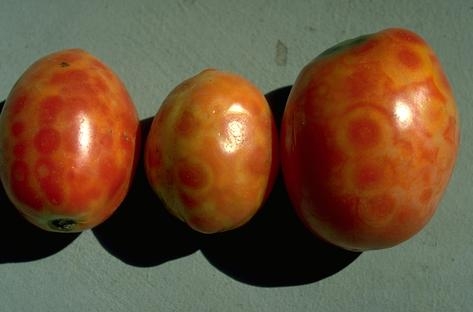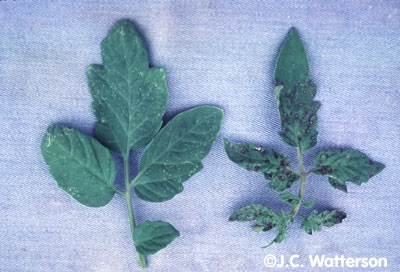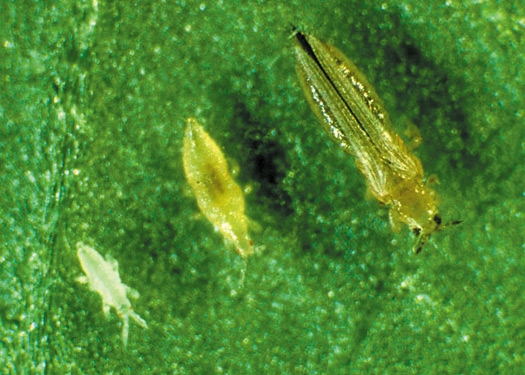Our dry climate on the east side works wonders to control fungal diseases. Most fungi prefer moist environments. While we still get an occasional fungal pathogen, we seem to have greater problems with insects and viruses. In many cases the insects and viruses team up to cause real mayhem in the garden.
In our area we have been subject to continual attacks on tomatoes by viruses. Our most common viral issue is beet curly top virus spread by the beet leafhopper. It is widespread from Coso Junction through Bishop. You may be familiar with its distinctive symptoms: curled up leaves, possibly with a purple tint, along with small, undersized fruit. But it isn't the only viral issue we have to deal with.
Of lesser importance in our area is tomato spotted wilt virus (TSWV), but this year it has had a good showing in the Owens Valley.
This virus can affect dozens of plants, but tomatoes, being so common, are the most usual victim reported.
The easiest symptom to recognize is the distinctive color pattern on ripe fruit. (See picture.) If you see this (probably with some leaf spots) there is a good chance this virus is the culprit.
In some cases the virus attacks early or is more virulent and does a number on the foliage and new shoots. The leaf symptoms start on new shoots and at first may look bronze, eventually turning into dead spots. On tomato I usually see these spots more toward the base of the individual leaflets, but this isn't always the case. Other crops respond differently. Sometimes the virus kills shoots entirely! By the time I usually get to see the plants the disease has progressed to the point where there is a mess of dead shoots, and half-dead leaves. I cross my fingers and hope there is symptomatic fruit for me to see. Viruses can be hard to diagnose by symptoms alone.
This virus is spread by tiny, hard-to-kill insects called thrips. Unless you have eagle eyes, you'll need a lens to see them. These small insects have frilled wings and rasping mouthparts that tend to tear up new buds and leaves, leading to malformed growth. While feeding, they infect the plants with the virus. Even if you kill the insects, once infected the plant is a goner.
So what do you do? First look for symptoms to confirm this is the problem. I usually check to see if there are thrips present as well with a hand lens or microscope. If I'm sure I have the virus I remove the infected plants and try my best to control the thrips population. UC IPM suggests insecticidal soap.
I wouldn't lose a lot of sleep worrying about whether my garden was going to be attacked. Some years are worse than others. Keeping weeds under control and watching for pests diligently is your best plan. Using yellow or blue sticky traps in the plant canopy is a good technique to monitor insect population.
As always, if you aren't sure what's going on, please contact the Master Gardeners at immg@ucanr.edu for help.


